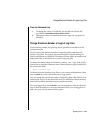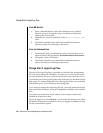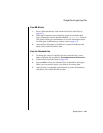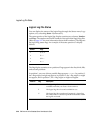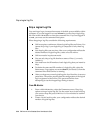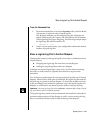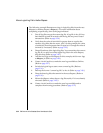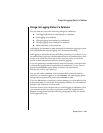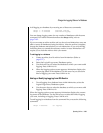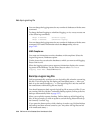
Operating OnLine 3-31
Move a Logical Log File to Another Dbspace
From the Command Line
1. From the command line, execute the tbparams utility with the -d and
-l (lowercase L) option to drop a logical log file.
The -d option indicates you are dropping a log file. When the -d
option is followed by the -l option, the -l introduces the ID number
of the logical log file you are dropping. The following example drops
the logical log file with ID number 121:
tbparams -d -l 121
2. Create a level-0 archive after your configuration reflects the desired
number of logical log files.
Move a Logical Log File to Another Dbspace
Changing the location of the logical log files is actually a combination of two
simpler actions:
■ Dropping the logical log files from their current dbspace
■ Adding the logical log files to their new dbspace
Although moving the logical logs is easy to do, it can be time-consuming
because you must create two, separate level-0 archives as part of the
procedure.
You can improve performance by moving the logical log files out of the root
dbspace. When OnLine disk space is initialized, the logical log files and the
physical log are placed in the root dbspace. To reduce the number of writes
to the root dbspace and minimize contention, move the logical log files to a
dbspace on a disk that is not shared by active tables or the physical log.
Important: You must be logged in as user informix or root to add or drop a logical
log, and OnLine must be in quiescent mode.
The logical log files contain critical information and should be mirrored for
maximum data protection. If the dbspace to which you are moving the log
files is not already mirrored, plan to add mirroring to the dbspace.



